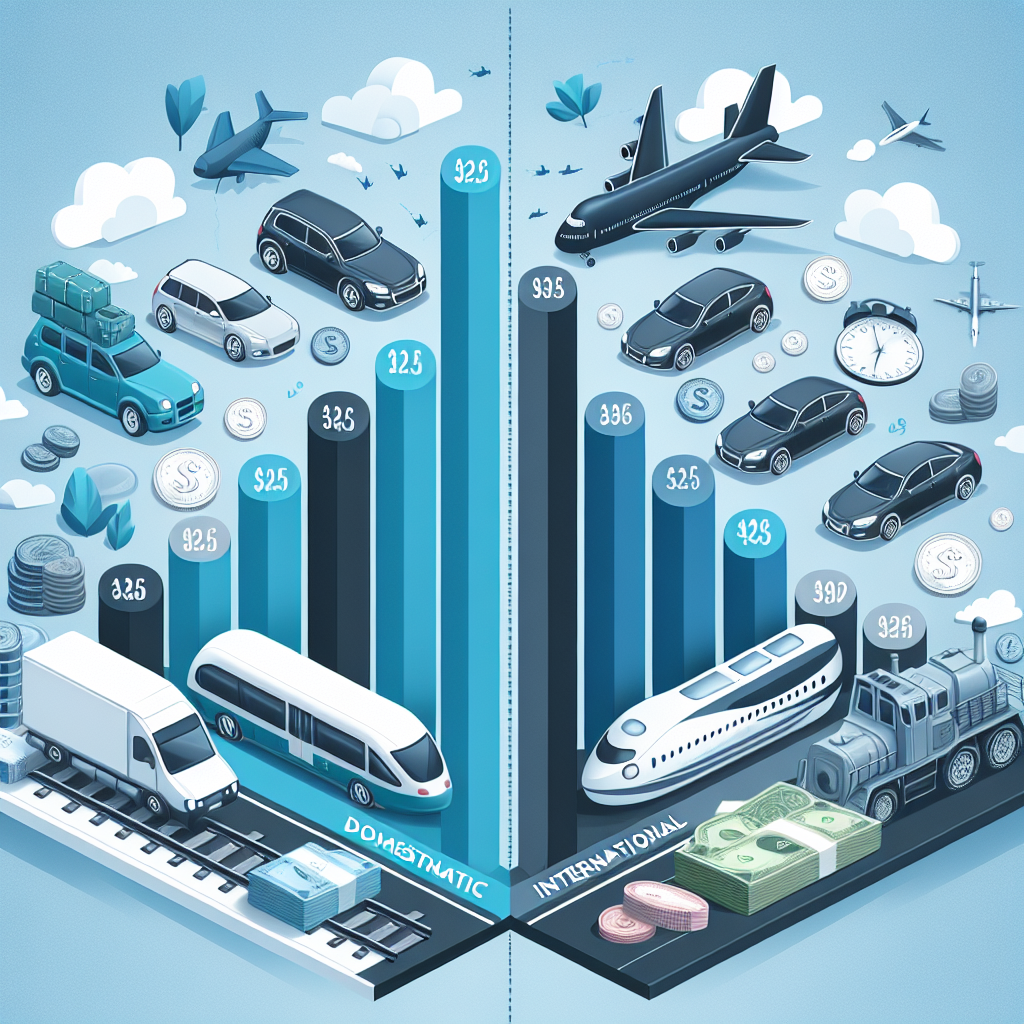Table of Contents
Introduction

Transportation is an essential aspect of modern life, enabling people and goods to move from one place to another efficiently. In Indonesia, a vast archipelago with thousands of islands, transportation plays a crucial role in connecting different regions and facilitating economic growth. There are two main types of transportation in Indonesia: domestic and international. In this article, we will explore and compare the costs associated with these two types of transportation, analyzing various factors that contribute to their differences.
Domestic Transportation Costs
1. Land Transportation
Land transportation is a common mode of domestic travel in Indonesia, especially for shorter distances. The most popular means of land transportation are buses, trains, and private vehicles. The cost of land transportation varies depending on several factors, including distance, vehicle type, and fuel prices.
For example, taking a bus from Jakarta to Bandung, a distance of approximately 150 kilometers, may cost around 50,000 to 100,000 Indonesian Rupiah (IDR). On the other hand, traveling by train on the same route could cost between 100,000 to 200,000 IDR, depending on the class of service chosen.
Private vehicles offer more flexibility but come with additional expenses such as fuel, toll fees, and maintenance costs. The cost of fuel in Indonesia is influenced by global oil prices and government policies. As of 2021, the average price of gasoline is around 10,000 IDR per liter.
2. Air Transportation
Air transportation is the fastest mode of domestic travel in Indonesia, particularly for long distances or inter-island travel. The country has numerous domestic airlines offering flights to various destinations. The cost of air travel depends on factors such as distance, airline, class of service, and booking time.
For example, a one-way flight from Jakarta to Bali, a distance of approximately 1,000 kilometers, can range from 500,000 to 2,000,000 IDR, depending on the airline and booking time. Prices tend to be higher during peak travel seasons or when booking close to the departure date.
It is worth noting that budget airlines have emerged in recent years, offering lower fares compared to traditional carriers. However, these budget airlines often charge additional fees for services such as baggage allowance, seat selection, and in-flight meals.
International Transportation Costs
1. Land Transportation
Land transportation for international travel is relatively limited in Indonesia due to its geographical nature as an archipelago. However, there are land connections available for neighboring countries such as Malaysia and Singapore. The cost of land transportation for international travel depends on the distance, border crossing fees, and transportation mode.
For example, traveling by bus from Jakarta to Kuala Lumpur, the capital of Malaysia, may cost around 500,000 to 1,000,000 IDR, including the border crossing fees. The journey takes approximately 12 to 14 hours, depending on traffic conditions and immigration procedures.
2. Air Transportation
Air transportation is the primary mode of international travel in Indonesia. The country has several international airports, with major hubs located in Jakarta, Bali, and Surabaya. The cost of international flights varies significantly depending on the destination, airline, class of service, and booking time.
For instance, a round-trip flight from Jakarta to Singapore, a distance of approximately 1,000 kilometers, can range from 1,500,000 to 5,000,000 IDR, depending on various factors. Prices tend to be higher during peak travel seasons or when booking close to the departure date.
Similar to domestic air travel, budget airlines also operate international routes, offering lower fares compared to full-service carriers. However, passengers should be aware of additional fees and restrictions that may apply.
Factors Influencing Cost Differences
Several factors contribute to the differences in transportation costs between domestic and international travel in Indonesia. These factors include:
1. Distance
The distance between the origin and destination plays a significant role in determining transportation costs. Longer distances generally result in higher costs, especially for air travel where fuel consumption and operational expenses are significant.
2. Infrastructure
The quality and availability of transportation infrastructure also impact costs. Well-developed infrastructure, such as highways and airports, tends to lower transportation costs due to increased efficiency and competition. In contrast, remote or underdeveloped areas may have limited transportation options, leading to higher costs.
3. Competition
Competition among transportation providers can influence prices. In areas with multiple airlines or bus companies, passengers may benefit from lower fares due to competition. However, in regions with limited options, prices may be higher due to a lack of competition.
4. Government Policies
Government policies, such as fuel subsidies or taxes, can directly affect transportation costs. For example, fluctuations in global oil prices impact fuel costs, which in turn affect land transportation expenses. Additionally, taxes and fees imposed on airlines or transportation services can contribute to higher prices.
Summary
In conclusion, transportation costs in Indonesia vary significantly between domestic and international travel. Domestic transportation options include land and air travel, with costs influenced by factors such as distance, vehicle type, fuel prices, and class of service. International transportation primarily relies on air travel, with costs determined by distance, airline, booking time, and class of service.
Factors such as distance, infrastructure, competition, and government policies contribute to the differences in transportation costs. Understanding these factors can help individuals and businesses plan their travel and logistics more effectively, considering both the financial implications and the convenience of different transportation options.
